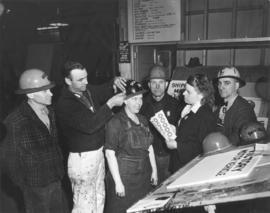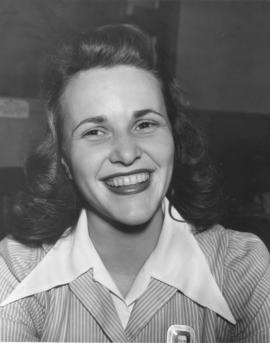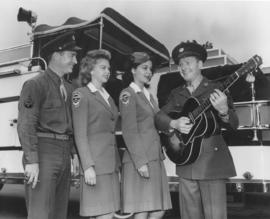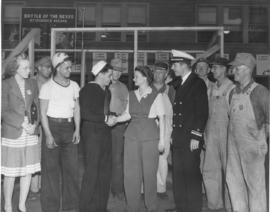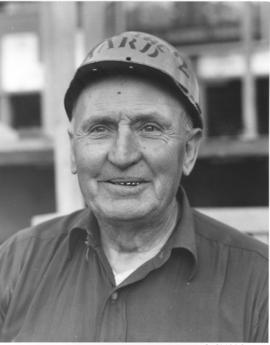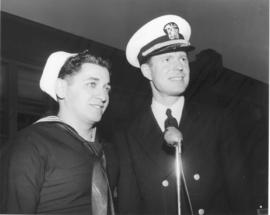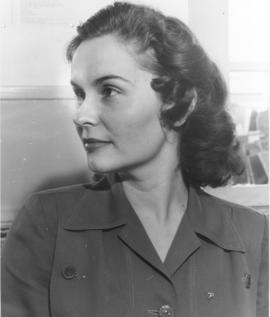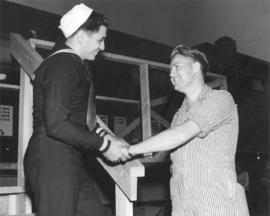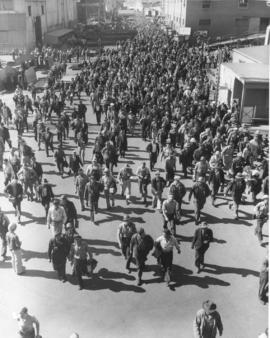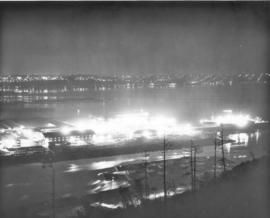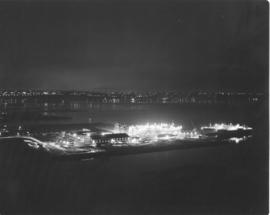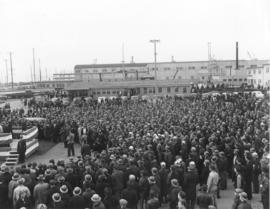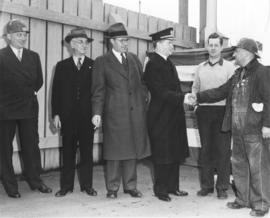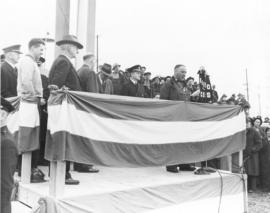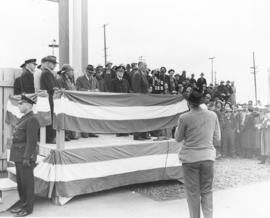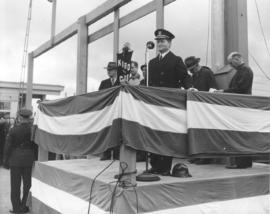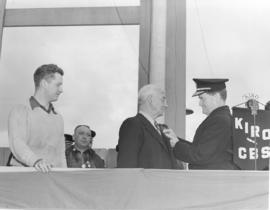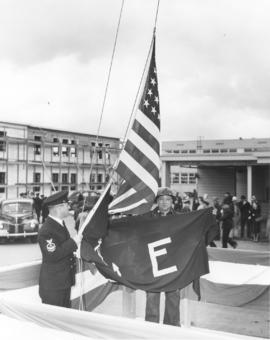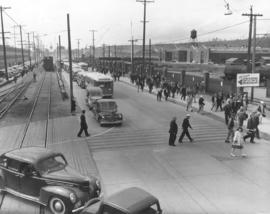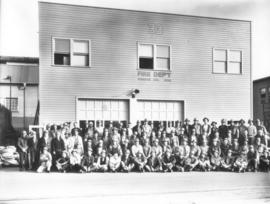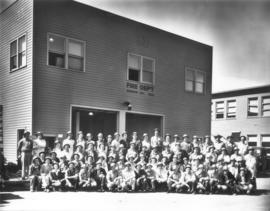- Item
- 1943-07
Part of Richards Studio Photographs
In July of 1943, an unidentified female employee at the Seattle-Tacoma Shipbuilding Corp. had one of the new white stars added to her helmet. In the star was a numeral representing how many relatives she had in the armed services. Relatives could be a husband, wife, mother, father, son, daughter, brother, sister, grandson or granddaughter. In the event that a relative was either killed in service or missing in action, a gold star would be added to the helmet. Workers were reminded each day of the personal reasons they had to give 100% in their defense work.
Seattle-Tacoma Shipbuilding Corp. (Tacoma); Helmets; World War, 1939-1945--Economic & industrial aspects--Tacoma;
